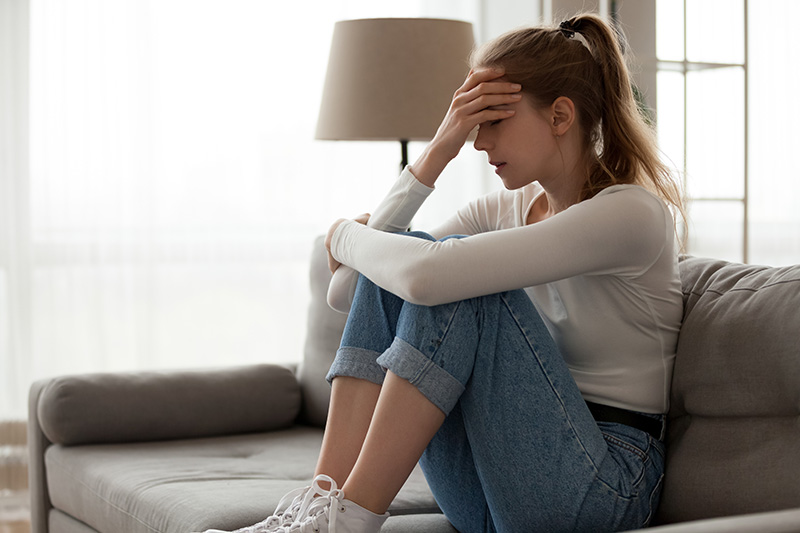If you have ever gone drinking and realized that you imbibed too much, then decided not to eat or to restrict your calories as a result, then you have some familiarity with drunkorexia. This is not a new phenomenon, although it is most common in certain environments, such as college, and among women in particular.
This is often accompanied by underlying eating disorders or mental health issues like anxiety or depression. For that reason, it’s important to recognize the signs of drunkorexia and get help where necessary.
What is Drunkorexia?
Drunkorexia is a slang term that is used to describe a new subset of eating disorders. This type of high-risk behavior occurs when an individual consumes excessive amounts of alcohol and then has eating disorder tendencies like purging tendencies after binge drinking in order to avoid weight gain.
Drunkorexia vs. Eating Disorders
Under normal circumstances, eating disorders are characterized by cycles of binging and purging, but with this behavior, the binging is relegated to alcohol consumption, and the subsequent purging is most commonly behaviors like:
- Skipping meals prior to drinking to save up calories for binge drinking
- Restricting caloric intake before drinking for the same reason
- Excessive exercising after the fact to compensate for the binge drinking
- Binge drinking to such a degree that an individual gets sick and can purge the calories by vomiting
In effect, drunkorexia is an unofficial form of eating disorder that has binging and purging tendencies designed to offset the caloric consumption associated with alcohol, and binge drinking in particular.
Drunkorexia Facts
The highest rate of drunkorexic behaviors occurs among college students, with seventy-nine percent using drunkorexic tendencies.
With relation to the tendencies, they generally occur before drinking, during drinking, and after drinking, and each of the tendencies during these spaces comes with a high risk of:
- Increased alcohol toxicity
- Physiological damage
- Mental health problems
- Psychosocial ramifications
What is Drunkorexia Motive?
Studies indicate that there are four main motives behind these tendencies.
Drinking, particularly among people in college, where the highest prevalence of these tendencies takes place, is a way to improve social interactions by enhancing an individual’s ability to conform in a social setting and build relationships.
But college-level drinking is a social norm, so people, especially women, might want to comply with those social expectations but don’t want to risk the excessive weight gain that might come from high quantities of alcohol consumption. There does not have to exist a known correlation for an individual between their personal alcohol consumption and weight gain for that same individual to engage in drunkorexic behaviors.
The purpose remains the same: to potentially avoid the weight gain while also still being able to drink alcohol.
Tangentially it also decreases negative emotions that are commonly associated with transitional phases in life like moving away from home for the first time, moving to a new city, starting a new university, and being away from friends and family. This helps to overcome feelings of sadness, boredom, and loneliness.
For some, the reasons behind drunkorexia behaviors are:
- A desire to be thin
- Dissatisfaction with body
- Poor self-esteem
- Problems regulating emotions
There are many indirect relationships between anxiety and these behaviors, and the more an individual struggles with stress and anxiety, especially during transitional phases, the more likely they are to engage in these forms of behavioral tendencies.
Eating Disorder Treatment for Drunkorexia
Studies have found that those with underlying inappropriate eating habits and depression, anxiety, or stress are more likely to have drunkorexia. As such, it’s highly probable that if you are struggling with behaviors and motivations for drunkorexia, you might need specific treatment for co-occurring mental health disorders and underlying eating disorders.
With Casa Serena, you can participate in women’s inpatient treatment that provides specialized treatment for drunkorexia. Our eating disorder program includes several forms of therapy groups, such as:
- DBT for Binge Eating and Bulimia
- Acceptance of Body Image Dissatisfaction
- Body Positivity
- Intuitive Eating Group
- Body and Mind Connection Group
- Setting Boundaries With an ED
- Anxiety group therapy
Our program length provides enough time for you to learn the skills you need to manage any underlying conditions like anxiety, to learn to set boundaries and to understand that there can be a better balance with regard to how you view your body and what eating behaviors you use.
Overall, drunkorexia is a slang term for those who try to manage or prevent weight gain by using binging and purging tendencies with regard to alcohol consumption. For many people, there are underlying anxiety issues, chronic stress, and eating disorders that can be addressed with the right type of treatment.
Contact our team today to learn more about our eating disorder programs.



